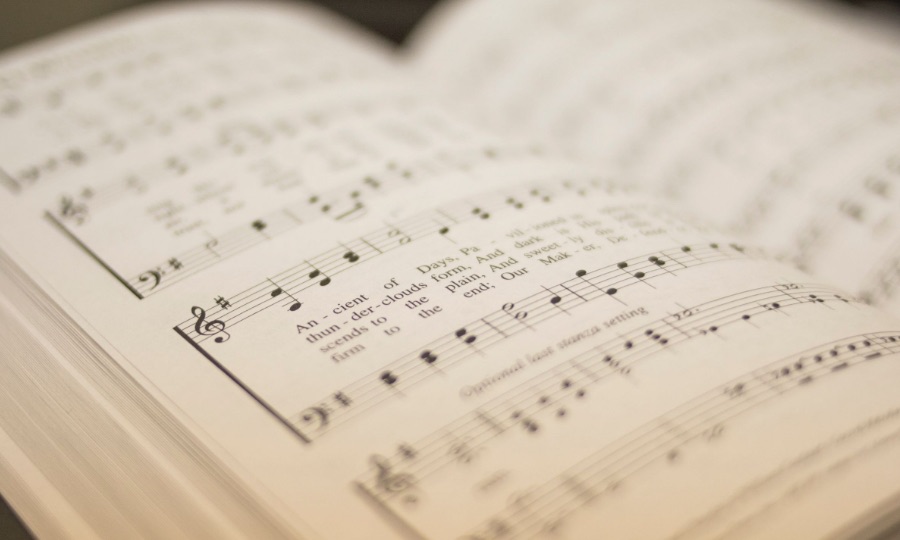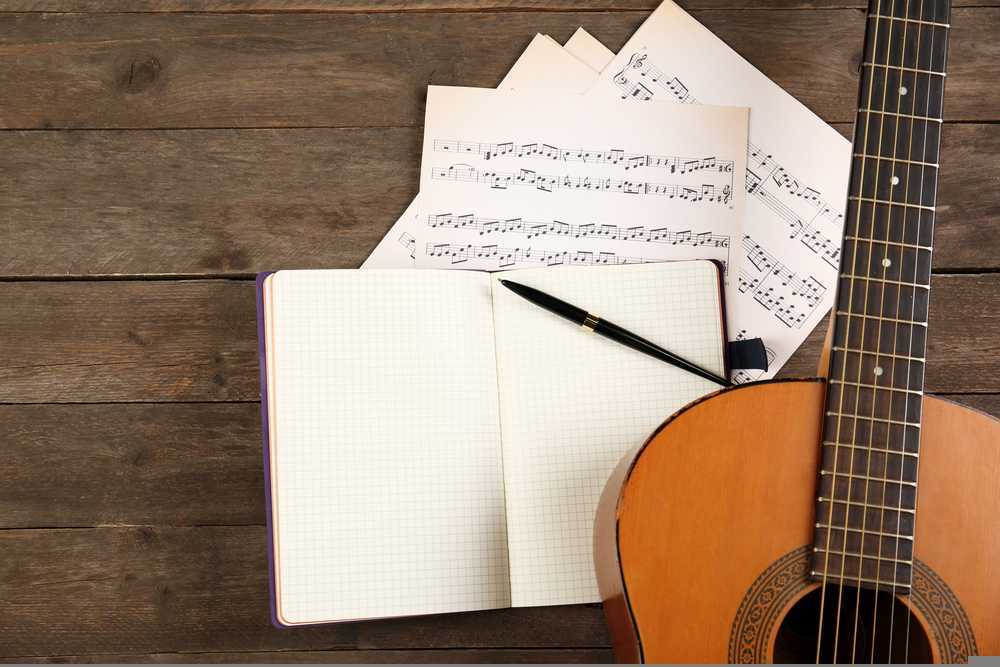Understanding how to write song lyrics is a necessary talent for any musician. After all, song lyrics are an important part of the connection between a listener and an artist.
Any track with superb song lyrics is just enticing because it allows almost anyone to enter your aural world.
However, lyric writing is not a simple procedure. How to write song lyrics is a highly personal creative process.
A dependable songwriting technique will assist you whether you’re a singer-songwriter or a professional composer.
If you can overcome writer’s block, you’ll be able to concentrate on crafting the best lyrics for your song.
Your favorite songs may make creating lyrics appear simple, but remember that every great lyricist began somewhere.
Writing lyrics for the first time can be intimidating, but happily, we’ll describe exactly how to write song lyrics below. We hope you can compose a wonderful song by the conclusion of this post.
Table of Contents
Set Your Goal
It can be beneficial to identify the aims of your songwriting process for any individual track before putting pen to paper.
Consider exactly what you’re attempting to communicate with your songs, or consider a few topics that naturally generate creativity for you.
Consider the speaker in your track as well.
Are you writing to the listener directly? Is your music a kind of emotional monologue? Or is it simply a retelling of a tale or experience?
Make a list of broad song concepts that you’d like to compose about and organize your thoughts around the most convincing option. Who knows, these early words of inspiration can make a wonderful song title later on!
The most critical aspect of this endeavor is to begin.
If you can reduce your thoughts down to a single lyrical concept, you’ll be well on your way to writing a complete page of lyrics.
We are sometimes so overwhelmed by subject matter that we write nothing at all, so taking the time to identify your aims for the track will surely put you on the right track.

Find What Inspires You
This is frequently the most difficult obstacle to overcome while learning how to create music lyrics, and even experienced lyricists struggle with it on a daily basis.
Finding something to write about may be simple in principle, but it may be challenging and frustrating in practice. It’s difficult to inspire yourself by sitting down and staring at a blank paper.
As a result, it’s usually best to do something else that will cause inspiration to strike you.
Walking, spending time with friends, seeing a movie, and listening to new music are all excellent strategies.
Keep an open mind to inspiration during this time, and it will come to you.
When you’re motivated, do everything you can to work rapidly and jot down as many ideas as possible.
Many songwriters regard inspiration as ephemeral. As a result, the more you write throughout this period, the better.
Use Your Own Ideas
Determine the sort of music you want to write and the types of lyrics you like and detest. It is entirely up to you what type of music you choose to compose.
Whether you believe it or not, you are a developing artist, and as such, you may forge your own path and make your own ideas about other artists and their work.
So, if you want to compose something similar to Kurt Cobain rather than classic Aretha Franklin, don’t allow anyone to tell you that you can’t.
Comprehending Segments Of A Song

A song is made up of various sections. You can add all of them or none of them to your song.
Everything comes down to you.
There are standard layouts of these parts that are utilized in most songs, therefore understanding the parts is necessary to understand how most songs sound.
They are as follows:
Introduction – is the segment at the start that leads into the song.
It may sound different from the remainder of the song, maybe faster or slower, or may not exist at all.
Most tracks do not have a prologue, so don’t feel obligated to include one.
Verse – This is the song’s primary section.
It is normally half to twice the length of the chorus, but it is not need to be.
The fact that the melody is the same but the lyrics alter between verses identifies a segment of a song as a verse.
Chorus – is a section of a song that repeats without changing: both the lyrics and the melody remain unchanged or almost unchanged.
This is typically where you try to fit the most catchy element of your song which is usually called the hook.
Bridge – is a portion that appears in some songs but not all.
The bridge is a segment of the music that sounds radically different than the rest of the song. It usually comes after the second chorus.
It is usually brief, with only a line or two of lyrics, and will occasionally segue into a key shift.
Build A Structure
If you’ve previously composed the concept, title, lyric, melody, chorus, or hook for your song, you can move on to the song structure, also known as song form.
Most songs include an introduction, verse, and chorus, and you might consider adding a bridge, a pre-chorus, or a refrain.
A refrain is a short lyrical line that incorporates the song’s title, whereas a pre-chorus is a portion that appears between the verse and chorus.
Songs may also feature an instrumental element or interlude, which may follow after a chorus, for example.
There are numerous ways to organize all of the elements of a song. However, obtaining the appropriate structure is sometimes the ingredient that truly brings the music together.
You can come up with the correct framework for your song by repeatedly performing a section to discover what feels the most natural to follow. But, give importance to the length of each segment, and how one portion flows into the next.
There is no rule requiring the sections to be in any particular order. You can start your song with a chorus or a verse; it’s entirely up to you to pick what works best for the song.
Construct Verses And Rhymes

If you haven’t already, build lyrical phrases now that you have a broad idea of where you want to place particular words.
Consider the pace and flow of your poetic lines. Each line should ideally have the same number of syllables and cadence as the one before it, just like poetry.
This is also an excellent moment to consult your rhyming dictionary.
When you use a rhyming pattern, it is much easier to create a song linguistically cohesive. Rhyming schemes are essential rhyme patterns.
Use Context In Rhymes
You can figure out when a song was created by someone who isn’t very good and the lyrics are cheesy.
This is frequently due to their rhyming excessively or incorrectly. You should avoid rhyming all of your lines, and any rhymes you employ, should appear natural.
Don’t include strange phrases or words in your songs only to get a rhyme. Your lyrics do not have to rhyme at all.
You can experiment with different rhyming styles to make your rhyming stand out more and avoid seeming overdone.
Did you know there are more ways to rhyme than you learned in school?
Investigate assonance/consonance rhymes, pararhyme, repetition, enforced rhymes, and other techniques.
Cliches should be avoided because they prevent your music from distinguishing out and do not showcase your unique talent.
If you have someone on their knees (especially if they’re begging for help), someone is strolling down the street (either a lady or you, either way, it’s been done), or you simply have to ask “why can’t you see,” you should definitely go back to the drawing board.
Use Melody In Your Lyrics
If you haven’t done it, it’s time to start placing your first full draft of lyrics into tunes.
If you’re a musician, looping a chord progression on your instrument of choice can help inspire some note combinations.
You might also try crafting melodies first on your instrument and then transferring them to your lyrics.
If you don’t play an instrument, collaborating with someone who does is a terrific idea!
In the worst-case scenario, you can always look for a chord progression loop online and start writing a melody line over it.
Don’t be intimidated by this process; it will be fairly simple.
Check Your Writing & Consult Others

What is the big picture here?
Is the music a story, a declaration, or a description? Is it philosophy or contemplation? Or Is it truly incomprehensible?
Begin shifting and altering words to make them match along with the rest of the lyrics.
Consider how you want to be perceived and how it relates to what you want to communicate.
Do you like how the vowel and consonant sounds are arranged? Is it possible for a line to have many meanings? Is there a particular phrase that stands out? Do you want to say something again?
Remember that when an audience hears a song for the first time, they only notice the sections that stand out the most.
When you’re finished with your music, it’s a good idea to share a test version with others. Even if they only read your lyrics, they may notice instances where the rhythm is incorrect or the rhymes seem unusual.
Of course, committee music is a poor idea, but if they detect anything and you agree it’s incorrect, fix it.
Final Words
Knowing how to write song lyrics can be an important turn aroundl to your career as a composer and musician. There is a lot to learn, just like with any other creative form, but anyone can accomplish it if they put their mind to it.
The most crucial thing is to practice how to write song lyrics as frequently as you can and to avoid giving up when you first start out. It will get easier the more you do it, and eventually you’ll wonder why composing lyrics was so difficult to begin with.
Let us know in the comment if you have any inquiry about how to write song lyrics.
Check also:















![The Top 12 Best One Piece Arcs [Ranked]](https://calibbr.com/wp-content/uploads/2022/06/The-Top-12-Best-One-Piece-Arcs-Ranked-180x180.jpeg)